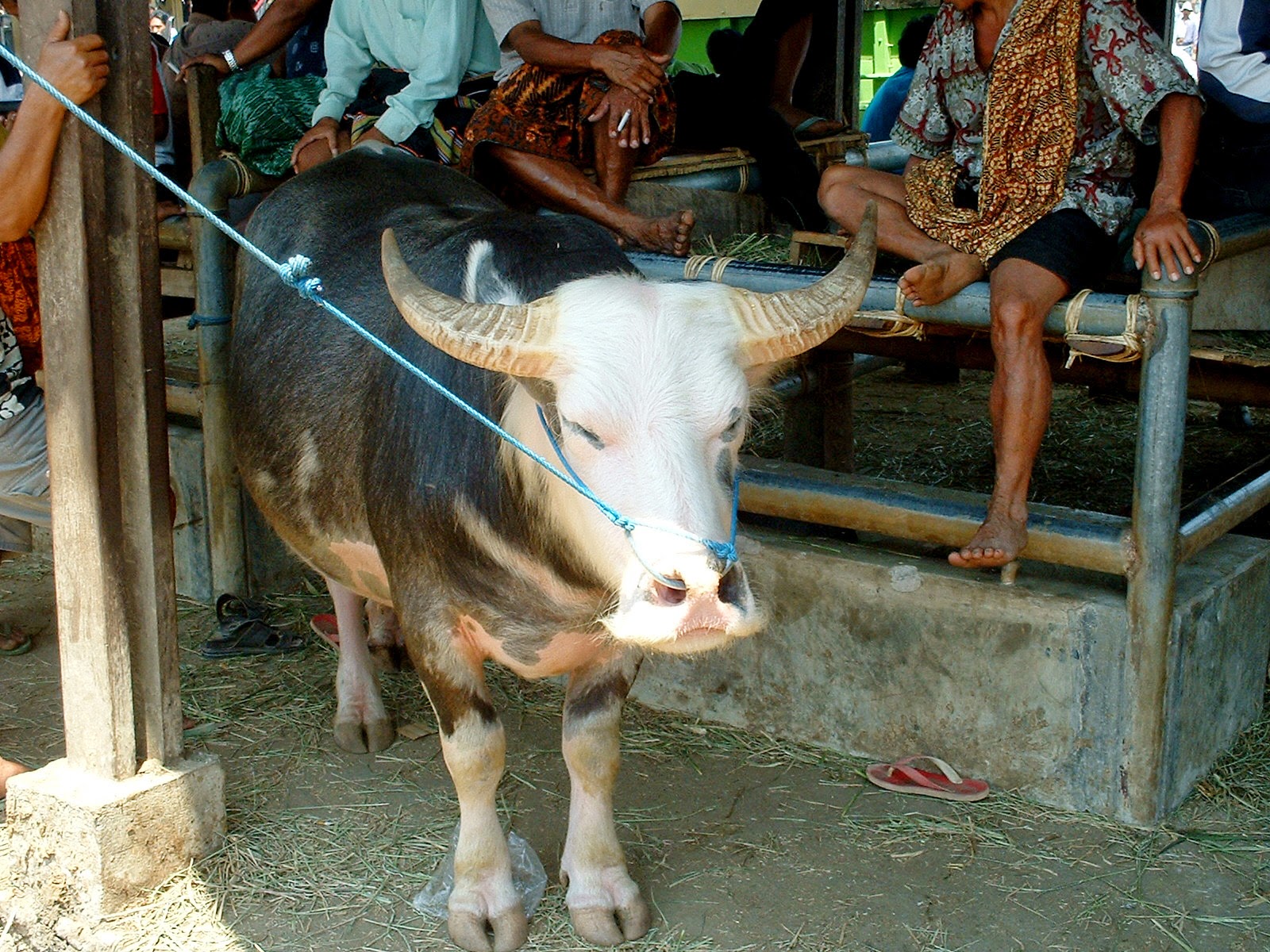It is definitely better to be a kerbau (water buffalo) than a babi (squealing pig) here in Toraja land. Both eventually meet the same fate but arrive there – quite literally – in a very different manner. Large numbers of pigs are trussed up with twine to bamboo poles and carried, squealing madly, to various festivals where they are rather quickly dispatched, butchered and distributed to the attending guests. Buffalo on the other hand live a rather carefree existence, tended to by a doting keeper and reserved for the most important of Torajan ceremonies, the funeral. For a funeral, buffalo are elaborately dressed and paraded around the grounds with much pomp and circumstance until eventually they too are dispatched, butchered and distributed to the attending guests.
House with decorative albino buff
Torajan economy is traditionally based on the buffalo. Its worth is determined by typical standards such as size, health, strength and also the Torajan fondness for huge horns and bovine albinism. Buffalo are a traditional investment option for Torajans. They are the primary commodity in a very interesting futures market. Here's how it works. You go to the buffalo market and purchases a cute little buffalo with good potential for lets say 3 million rupiah. The buffalo becomes yours but you do not ride home with the buffalo in tow. Your buffalo is left with a hired keeper who will tend to your investment. After lets say three years, you decide to make due on your investment. The keeper brings your buffalo to the market and you sell it for 11 million. You split the 6 million profits with the keeper and walk home with a cool 3 mill burning a hole in your sarong.
Tana Toraja, Sulawesi Little Kid Little Buffalo
But there exists a bit of a cultural twist concerning when you sell a buffalo. Mature buffs are primarily only bought and sold for funeral services which, much like weddings in the States, can be quite a debilitating factor in Torajan family economics. Some families extend their credit to the max in order to acquire lots of mature buffs with big horns and bovine albinism to put on a good funeral show for their extended family (which often number in the 100’s) and friends. An average funeral typically consists of a couple buffs and heaps of trussed up squealing pigs and a wealthy family might have as many as 50 - 100 bedazzled buffs lumbering around the funeral grounds for several days. In addition to the animals, a funeral, which typically lasts for four days, includes singers, dancers, lots of treats, tuac (local palm wine), and an actual set built specifically for the funeral ceremony consisting of several buildings for the guests to lounge about in during the festivities. After several years of tender love and care, including daily mud baths and hand washings, the buffs are adorned in colorful outfits, paraded to the funeral grounds and sacrificed amidst plenty of ceremony and celebrations.
Tana Toraja, Sulawesi Fancy Big Buffalo, Big Horns off to Funeral
Tana Toraja, Sulawesi House With Buffalo Horns
While the festivities progress over the days, trussed up swine at random times are carried into the funeral set and plopped down in the makeshift courtyard where they remain squealing wildly among the guests. Remarkably, the guests seem oblivious to the pigs desperate squeals – all except those few unfortunate visitors from afar with visions of slack jawed yocals playing “Dueling Banjos” wedged in their heads.







No comments:
Post a Comment